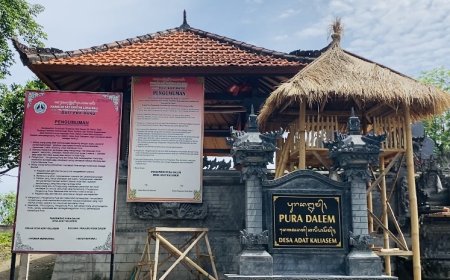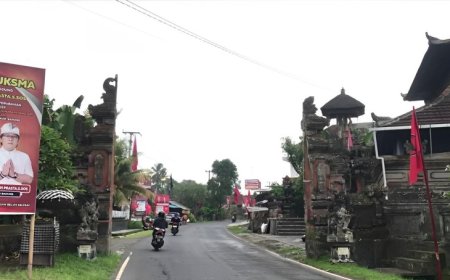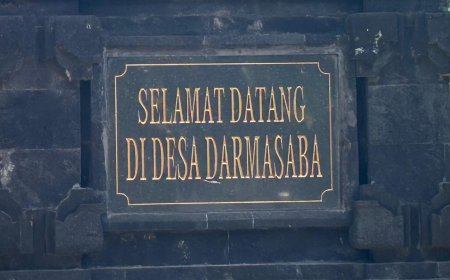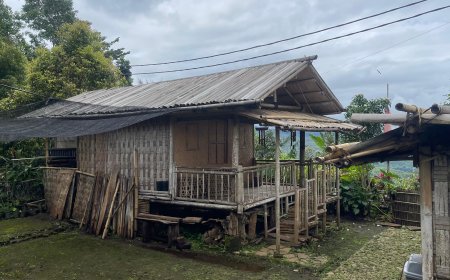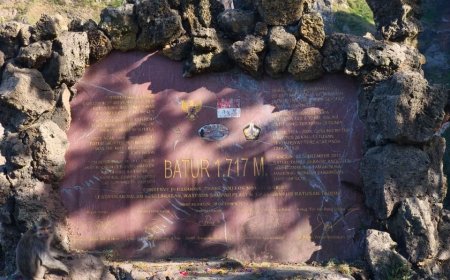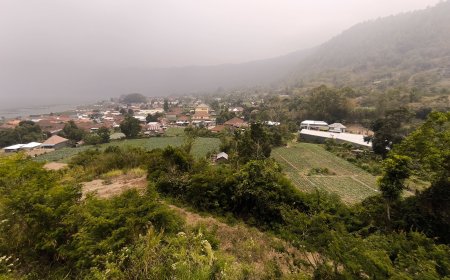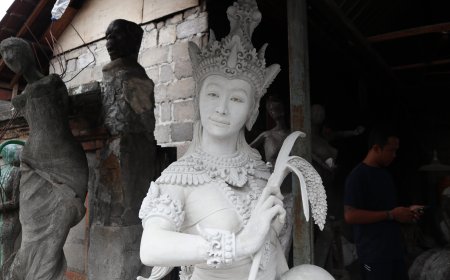Preservation of Balinese Script on Street and Building Names The Governor’s Policy as a Manifestation of Strengthening Balinese Cultural Identity
The Governor of Bali’s policy through Regulation No. 80 of 2018 mandates the use of Balinese script on street signs, buildings, public facilities, and educational institutions. The rule requires the Balinese script to be placed above Latin letters with balanced proportions, making public spaces a medium for cultural preservation. Its purpose is not merely administrative, but to strengthen Bali’s identity, foster community pride, and introduce the Balinese script to younger generations and tourists.
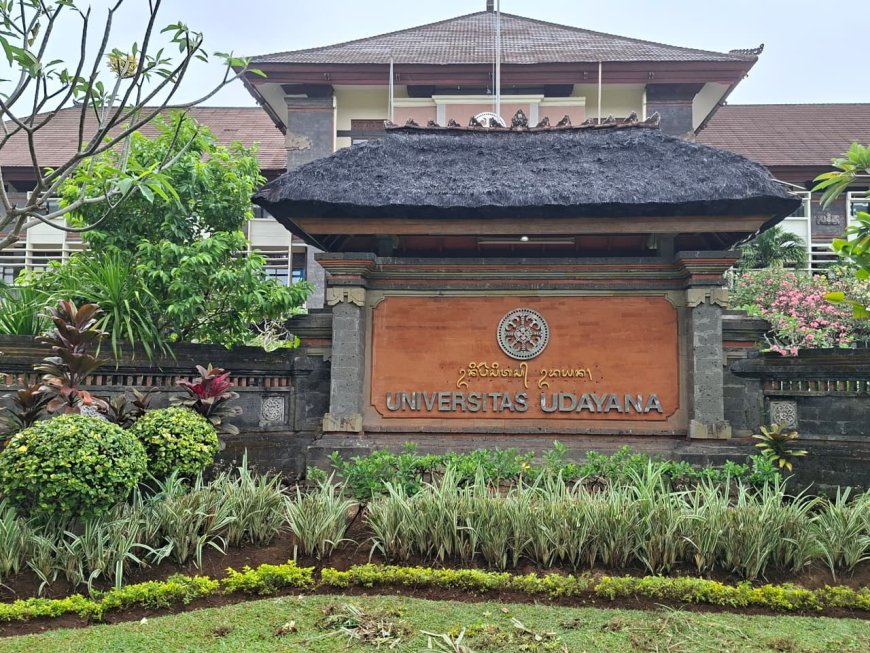
Imagine walking in Denpasar on an afternoon. The streets are crowded, shop signs line the way, then your eyes fall upon a street sign. Latin letters are clearly displayed, but above them lies a row of characters that, for many foreigners, look like exotic ornaments from the past. That is the Balinese script, once found mostly in palm-leaf manuscripts, temples, or school textbooks, now rising again, appearing in every corner of public spaces.
Balinese Script on Public Facilities (Source: Personal Collection)
This revival is no coincidence. There is one key policy that has changed the face of Bali’s public spaces, namely the Governor of Bali Regulation No. 80 of 2018 on the Protection and Use of Balinese Language, Script, and Literature. The regulation, enacted by Governor Wayan Koster on September 26, 2018, contains a rule that is simple but highly impactful. It states that Balinese script must be written on street signs, building names, government offices, public facilities, and even tourism sites. The rule is clear: Balinese script must be placed above Latin letters, and the size of its writing must be balanced so that it can be read.
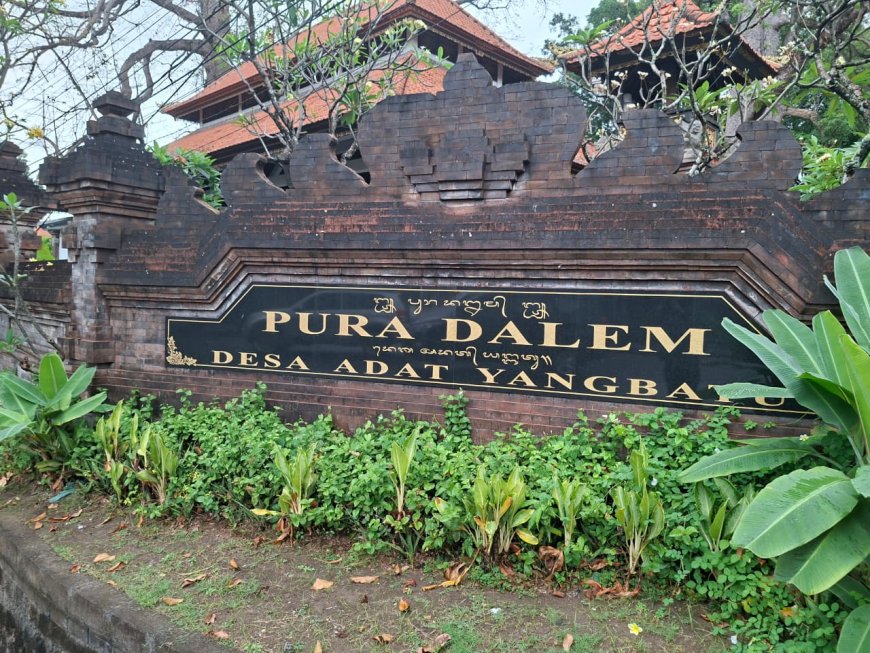
Balinese Script on Hindu Worship Facilities (Source: Personal Collection)
Why Signboards? Because public space is the most effective stage to preserve something that is nearly lost. A language and script cannot survive only in academic circles or museums. They must be present where people walk, in front of schools, on the roads passed by motorcycles every day. When a high school student goes to class and reads a signboard written in Balinese script, they are unconsciously interacting with ancestral heritage. The same goes for foreign tourists, who may not be able to read it, but will know that Bali has a unique identity, distinct from other destinations in the world.
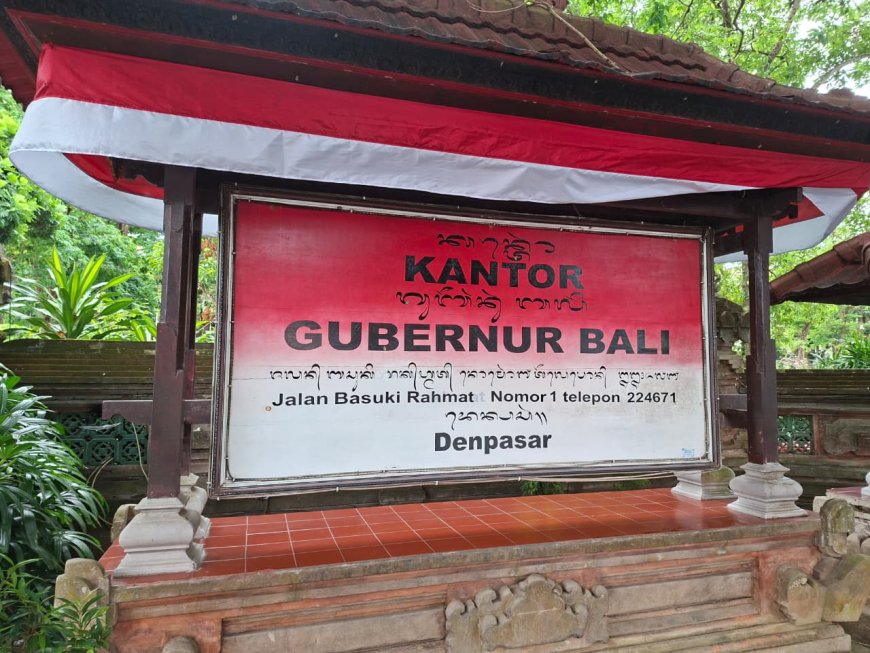
Balinese Script on the Governor of Bali’s Building (Source: Personal Collection)
Of course, this policy is not just about replacing old signboards with new ones. There is a bigger strategy behind it. The Provincial Government of Bali established the Institute of Balinese Language, Script, and Literature, involving academics, cultural figures, and artists. This institute provides technical recommendations, from writing standards, board layouts, to development programs. Furthermore, the government designated February as Balinese Language Month, a celebration of language and script through competitions, seminars, and exhibitions. This is where cultural politics comes alive, not only through written regulations but also through moments that bring the Balinese script to the hearts of the people, especially the younger generation.
However, this journey is not without challenges. Many old signs have to be replaced, the costs are significant, and not everyone can write Balinese script correctly. In some villages, signs are made hastily, with Balinese script serving only as decoration, without standard guidelines. This is where education and training are crucial. The government stresses that the proportion of script and Latin letters must be balanced, not merely pasted on like accessories. Because the ultimate goal is not beautification, but the revival of reading and writing skills in Balinese script among the people.
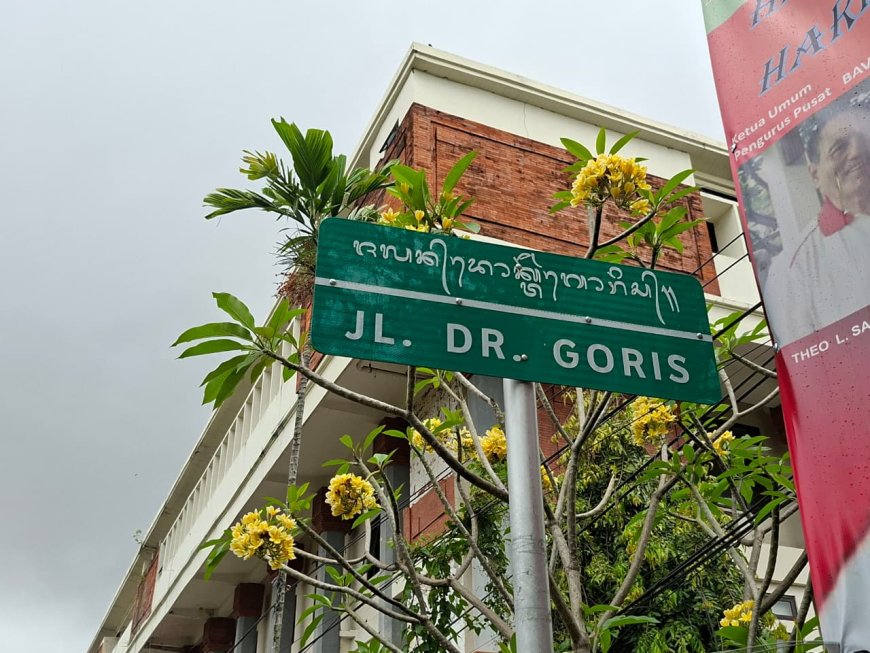
Balinese Script on Street Signs (Source: Personal Collection)
The impact of this policy has begun to be felt. Streets in city centers are now adorned with dual-language signs. School buildings display their identities in Balinese script at their entrances. Inauguration plaques are written in two scripts: Latin and Balinese. The presence of script in public spaces sparks a sense of pride. Children start asking their teachers, “Ma’am, how do you read this?” Tourists take photos of street signs not only as directions but also as part of their cultural experience. Gradually, the Balinese script is no longer seen as outdated, but as cool, because it exists in everyday life.
More than that, this policy sends an important message, modernity and tradition can go hand in hand. Bali can build roads, hotels, and modern tourism facilities without losing its identity. With Balinese script on signboards, all that development has roots, not floating aimlessly in globalization. Script becomes a cultural anchor, a marker that this land has history and identity of priceless value.
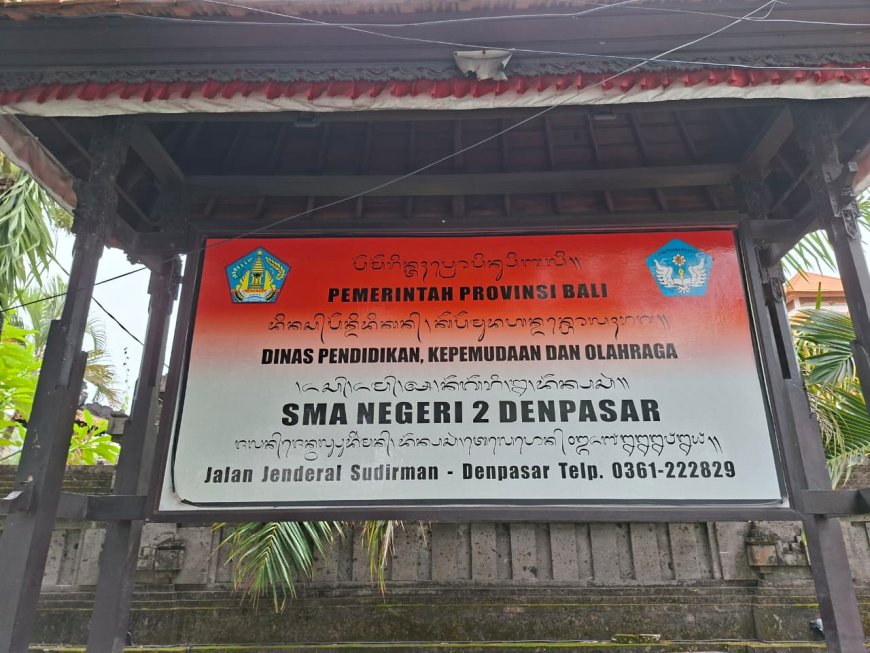
Balinese Script on a School Building (Source: Personal Collection)
Perhaps the next challenge is consistency. Will all districts and cities comply? Will signboards be made with good quality, not haphazardly? Will the younger generation be encouraged to learn reading and writing the script, or be content just seeing it? All those questions remain open. But one thing is certain, through this policy, the Balinese script no longer remains confined to old palm-leaf manuscripts, but returns to the streets, buildings, and public spaces we inhabit every day.
In the end, the preservation of Balinese script through signboards is about collective pride. This policy is not just an administrative symbol, but a simple yet effective way to tell the world, “Bali is different, Bali has its own language, and Bali is proud to show it.” This is the new face of Bali’s public space. Modern, yet firmly rooted in ancestral identity.
Source of Reference:
Provincial Government of Bali. (2018). Governor of Bali Regulation Number 80 of 2018 on the Protection and Use of Balinese Language, Script, and Literature as well as the Implementation of Balinese Language Month. Denpasar: Provincial Government of Bali.






